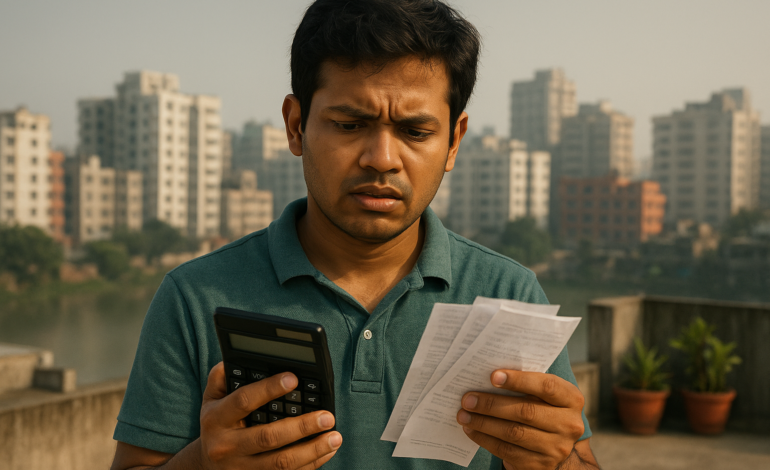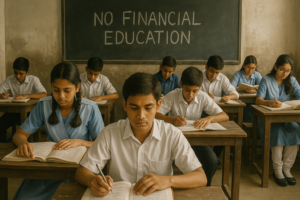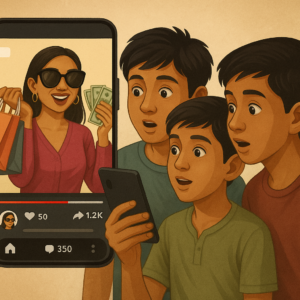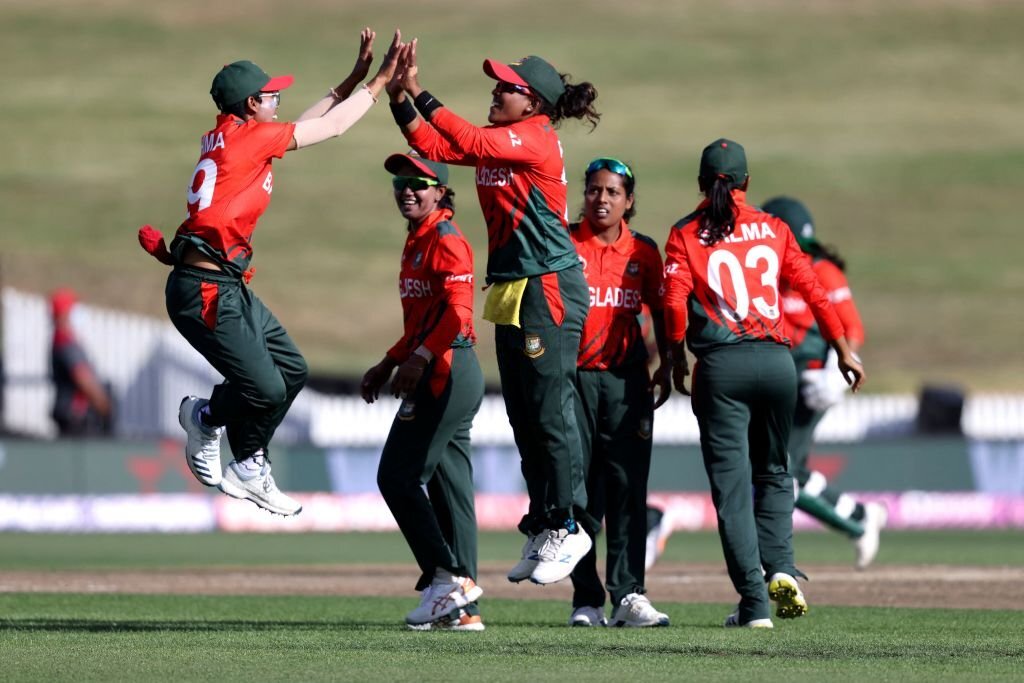
4. High Consumerism, Low Saving Instinct
In recent years, a wave of consumer culture has swept across Bangladesh, especially in urban areas. Social media influencers flaunting lifestyles, aggressive advertising, and easy access to credit have all contributed to a mindset that encourages spending rather than saving. People are increasingly drawn to the idea of living “stylishly,” even if it means spending beyond their means.
This is especially visible in social customs like weddings, where families often feel compelled to take out loans or exhaust their savings to host lavish events. Similarly, there’s social pressure to buy expensive gifts, branded clothing, the latest gadgets, or dine at trendy restaurants—not necessarily because one can afford it, but because “dekhate bhalo lagbe” (it should look good).
Three patterns stand out:
- Status-driven spending: Financial decisions are often made based on how they will appear to others, rather than long-term necessity.
- Impulse buying culture: Discounts, offers, and influencer promotions on Facebook and Instagram push people to make unplanned purchases.
- Neglect of savings: With most income going toward lifestyle spending, saving becomes an afterthought—if it happens at all.
This desire to keep up appearances often overshadows the importance of building financial security. Over time, it leads to a cycle where people earn more, spend more, and still find themselves financially vulnerable.

5. Living Paycheck to Paycheck
For a large portion of the Bangladeshi population, particularly in middle- and low-income households, survival takes precedence over saving. The constant struggle to meet daily needs means that setting aside money for the future is often seen as a luxury, not a priority.
The high cost of living, especially in urban centers, leaves little room for financial flexibility. From rent and utility bills to groceries, transportation, and medical expenses, the monthly costs quickly add up, leaving families with just enough to get by until the next paycheck. In many cases, there is no surplus at the end of the month—what is earned is entirely consumed by immediate needs.
Additionally, the responsibility of supporting extended family members, including parents or siblings, further strains finances. In Bangladeshi culture, family support is often expected, which means that even if an individual earns a decent income, they may be obligated to share it with relatives, making it even harder to save.
Inflation, especially the rising costs of food and fuel, exacerbates this situation. As prices increase, the purchasing power of a household decreases, meaning even more money has to go toward basic needs, with nothing left to save or invest.
For those working in the gig economy or as freelancers, income is often unpredictable. Small traders, rickshaw pullers, day laborers, and others in informal sectors face instability, as they do not have a fixed salary or benefits like health insurance or paid leave. This income volatility makes it nearly impossible to manage savings, as one bad month can set them back financially.
The combination of these factors creates a precarious financial situation for many, where the next paycheck is not just a source of comfort, but a necessary lifeline to make it through another month. In this environment, financial planning for the future simply becomes out of reach.
Top 10 Income Ideas for Students to Earn Money Easily
6. Reliance on Informal Borrowing and Microcredit
In Bangladesh, many individuals rely on informal borrowing when faced with financial needs, especially in rural areas. Turning to relatives or loan sharks becomes a quick, albeit risky, solution. While borrowing from family and friends may seem like a safer option, it often leads to strained relationships, as repayment becomes uncertain. Loan sharks, on the other hand, offer money quickly but at extremely high interest rates, trapping borrowers in a cycle of debt.
Microfinance institutions (MFIs) have provided an alternative, offering small loans to low-income individuals. However, these loans often come with high interest rates, and borrowers frequently struggle to repay on time. With little understanding of how to manage the repayments, many find themselves stuck in debt traps, unable to break free from the cycle of borrowing and paying back.
Additionally, many rural areas still lack access to affordable formal banking services, leaving people with limited choices. Without access to cheaper loans from banks or other formal credit services, informal borrowing becomes the go-to solution, leading to long-term financial instability for many households.
7. Digital Finance Boom Without Guidance
With the rapid expansion of mobile banking and digital wallets, Bangladesh has witnessed a digital finance revolution. Mobile apps like bKash, Rocket, and Nagad are transforming the way people send money, pay bills, and manage transactions. However, as digital finance grows, so does the risk of misuse due to the lack of financial literacy in this space.
Many users, especially older generations and those new to digital tools, fall prey to scams or poorly understand how to navigate mobile banking apps. Fraudulent schemes often trick individuals into sharing sensitive information, leading to financial losses. Additionally, the temptation of easy credit from digital loan apps has led to impulsive spending. These apps make borrowing feel effortless, with users often unaware of the high-interest rates and the long-term financial burden they can create.
The gap between the availability of digital financial tools and the knowledge needed to use them responsibly poses a significant challenge. Without proper guidance, many are unable to maximize the benefits of digital finance, leaving them vulnerable to debt traps and financial insecurity.

8. Gender Inequality in Financial Access
Gender inequality remains a key barrier to financial independence for many Bangladeshi women. While women in urban areas may have access to bank accounts or digital financial services, a large number of rural women still lack basic access to financial institutions or education. In many households, cultural norms dictate that men handle financial matters, leaving women with limited autonomy over their own finances.
As a result, women often rely on their husbands or male relatives for financial decisions, reducing their exposure to money management skills and opportunities to build wealth. This dependence creates a cycle where women’s financial awareness and confidence remain low, making them more vulnerable to financial exploitation and limiting their ability to save or invest. Without the tools to manage their own finances, women’s economic empowerment is hindered, perpetuating a cycle of financial dependence.
Customs Over Constitution? How Social Norms Rob Women’s Land Rights
9. Urban vs Rural Divide
The divide between urban and rural areas in terms of financial access is stark. In urban centers, youth are more likely to encounter banking services, investment opportunities, and financial content through various media. They are also more exposed to fintech services, which make managing money easier and more accessible.
In contrast, rural communities face significant challenges. Limited access to formal banking services, a lack of financial education, and lower technology adoption mean that rural populations often lack the skills and knowledge to effectively manage money. Furthermore, misinformation about financial products and services spreads more easily in these areas, exacerbating the problem. With lower literacy rates and less exposure to reliable financial advice, rural communities are left at a disadvantage when it comes to money management.
10. Weak Governmental and Institutional Support
Despite the growing need for financial literacy, Bangladesh’s government and institutions have been slow to provide the necessary support. There are very few nationwide public awareness campaigns focused on financial education. The programs that do exist are often not widespread or accessible to the general public.
Banks and non-governmental organizations (NGOs) have made efforts, but their initiatives tend to be fragmented, with limited reach outside major cities. Financial education programs are often available only to a small, urban population, leaving vast swaths of the population underserved. Moreover, government schemes designed to promote financial inclusion often lack effective execution and reach, failing to address the real needs of the population. Without comprehensive support from institutions and the government, the financial literacy gap in Bangladesh continues to widen.
Solutions: How Bangladesh Can Overcome This Crisis
To address the financial literacy crisis in Bangladesh, several key measures must be implemented:
- Introduce financial literacy in school curriculums: Teaching personal finance at an early age is essential for building a financially savvy generation.
- Launch nationwide campaigns: Public awareness campaigns on TV, radio, and social media can reach a broad audience and help spread essential financial knowledge.
- Empower women with digital and financial tools: Providing women with access to financial education and digital banking services will help close the gender gap in financial literacy.
- Incentivize banks and fintech companies to teach money management: Banks and fintech companies should be encouraged to offer financial education programs and tools that are accessible to all.
- Promote community-based learning: Local leaders, such as imams or community figures, can play a crucial role in spreading financial knowledge and encouraging responsible money management.

Managing money isn’t just about having a steady income—it’s about knowledge, culture, and mindset. For Bangladesh to build a financially secure future, it must prioritize financial education at every level of society. From the classroom to the workplace, financial literacy should be a fundamental skill, empowering individuals to make informed decisions. A financially literate population is not only vital for individual well-being but is also a key driver of long-term national growth.













